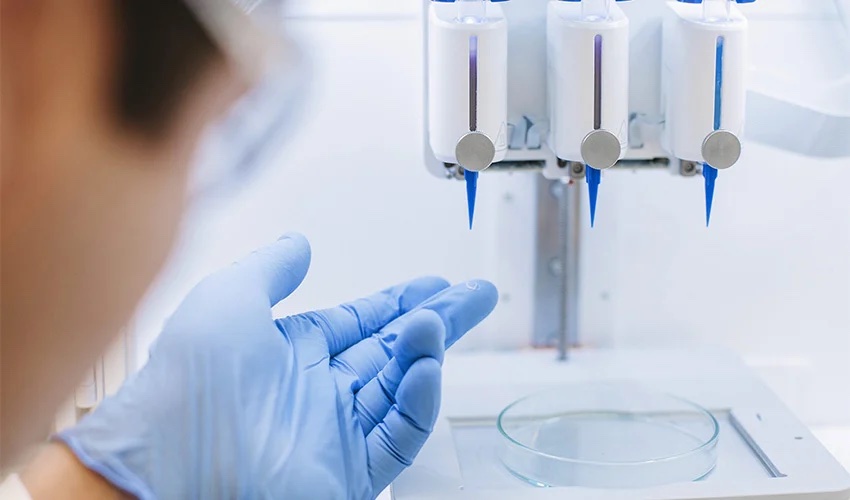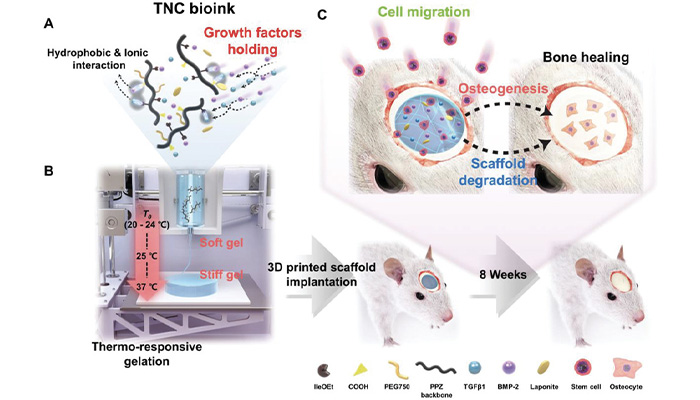Researchers Have Developed A Safer Bioink That Hardens at Body Temperature

3D bioprinting is a technique that is gaining momentum in the medical industry. This technology uses bio-materials to create artificial tissue structures needed to treat patient diseases or injuries. The hydrogel-based bioinks used for this process are composed of cells. In order to make them effective, these bio-materials must be strengthened with UV light or chemical processes. However, according to the Korea Institute of Science and Technology (KIST), this process can cause cytotoxicity, i.e., cell death. That’s why researchers at KIST developed a bioink that can naturally harden at body temperature in order to make them more compatible with human bodies.
As mentioned, a number of 3D bioprinting projects have been unveiled recently. Indeed, an exciting new technique using DLP technology to create vascularized human tissue was recently introduced. Researchers have also designed a 3D bioprinter capable of directly repairing human body tissues or organs damaged by disease or injury. This technology is also being exploited for research on mosquito-borne diseases. It has a number of exciting applications but has struggled to get off the ground due to the complexity of the process. This latest innovation, however, could open up the way for better bioprinting, allowing even for the production of organs in the future.

A diagram of the experiment (photo credits: KIST)
“A Bioink Adapted to Each Tissue and Organ”
The research team is led by Dr. Song Soo-Chang at the institute’s bio-materials center. It has succeeded in developing a bioink that can retain its physical structure without the need for photocuring or chemical processes. According to the KIST researchers, the bio-material is poly(organophosphazene) hydrogel-based. This substance exists as a liquid at low temperatures and turns into a hard gel at body temperature, about 37°C. Its low heat makes it easy to print a 3D model adapted to each patient. The bioink also has the advantage of preserving growth factors, proteins that help tissue regeneration, for a long time. To test their bio-material, the research team made a scaffold using a 3D bioprinter.
In the 3D structure, the team added a growth factor with a bone morphogenetic protein. The latter is necessary for cell infiltration and bone regeneration. The scaffold was then placed on a damaged rat bone. The cells from the surrounding tissue then migrated into the scaffold, and the bone was regenerated to normal tissue levels. According to the researchers, the implanted 3D scaffold biodegraded in the body over 42 days. “The research team has transferred technology for the thermo-sensitive polyphosphazene hydrogel…and the development of products such as bone graft materials and cosmetic fillers is underway. As the bioink developed this time has different physical properties, follow-up research to apply it to the regeneration of other tissues besides bone tissue is being conducted, and we expect to finally be able to commercialize bioink tailored to each tissue and organ.” To learn more about this new bioink from the Korean institute, click HERE.
What do you think about this new bioink? Let us know in a comment below or on our LinkedIn, Facebook, and Twitter pages! Don’t forget to sign up for our free weekly Newsletter here, the latest 3D printing news straight to your inbox! You can also find all our videos on our YouTube channel.






